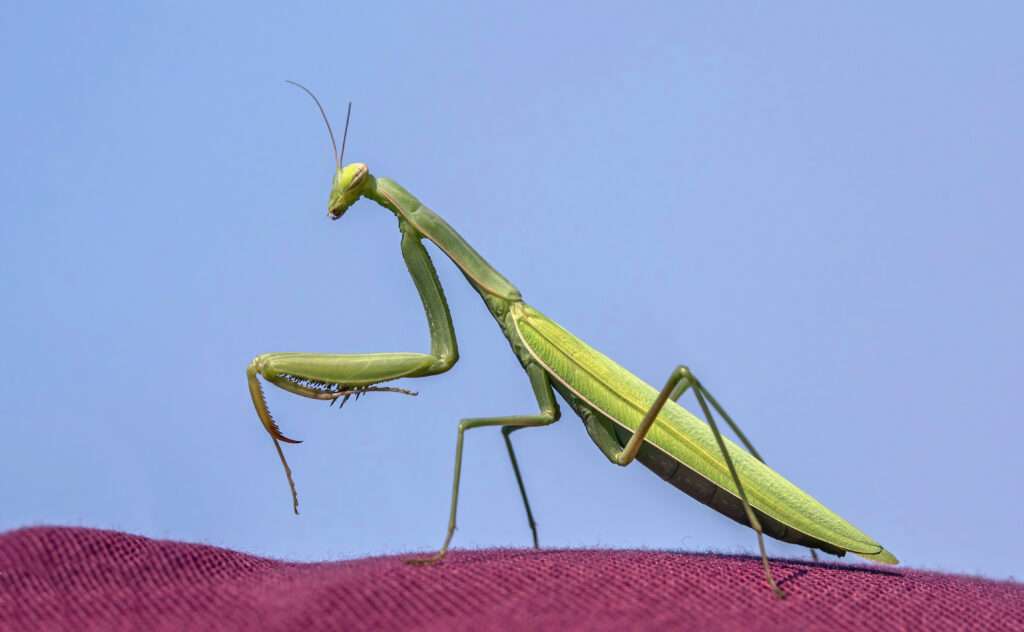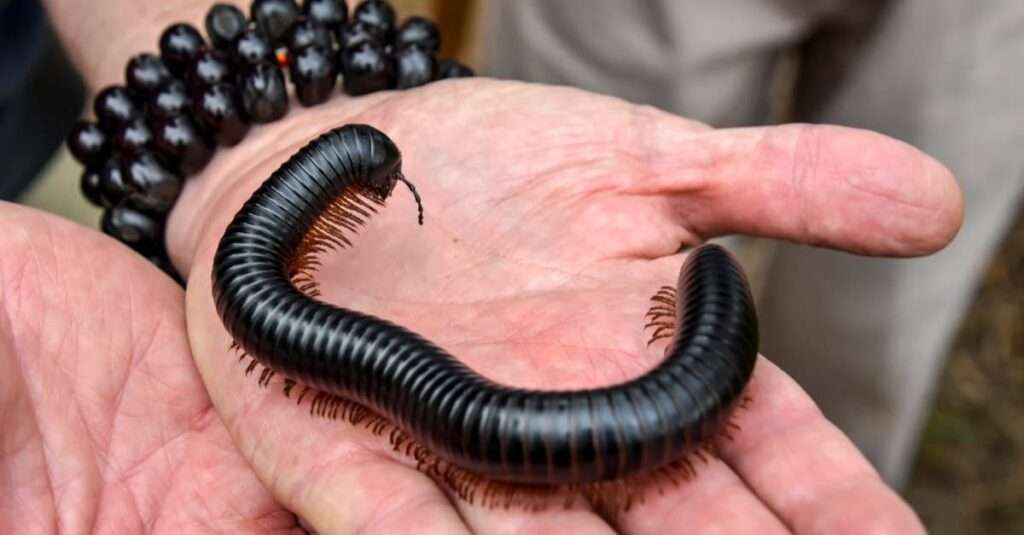
Over 2,400 species of insects make up the order (Mantodea) of mantises, which is divided into 33 families and 460 genera. The Mantidae is the largest family (“mantids”). Mantises are found in both temperate and tropical settings all over the planet. They have flexible necks and triangular heads with protruding eyes. Mantodea may or may not have wings on their elongated bodies. The front legs of the praying mantis are very noticeable and are bent and held together at an angle that resembles the attitude of prayer.
Food
Carnivorous praying mantis eat mostly insects and other tiny animals. Mantids also consume tiny birds, frogs, lizards, and insects like grasshoppers and crickets.
Habitat
They are typically found in drier areas, particularly at latitudes that are tropical or subtropical. They can be discovered in southern Africa, southern Europe, and North America.
Appearance
The heads of praying mantids are triangular and have lengthy necks. They have the ability to fully rotate their heads 180 degrees. They have excellent camouflage, adopting hues that let them mix seamlessly with vegetation. Some people also have incredible body forms that give them the appearance of leaves or branches. To help them grip onto their prey, which they often start eating head first, their front legs are equipped with rows of sharp spines.

Reproduction
In order to deposit and store sperm in a particular chamber close to the female’s abdomen’s tip, the male of a mantis species leaps onto her back, clasps her thorax and wing bases with his forelegs, and arches his abdomen. Depending on the species, the female can lay anywhere from 10 to 400 eggs. The three life phases of mantis are egg, nymph, and adult. The adult stage is reached after five to ten molts, and the nymphs frequently mimic ants.
Living Conditions to Keep this as Pet
It is not particularly tough or labor-intensive to take care of praying mantis. To succeed, you must nevertheless adhere to a few fundamental guidelines.
Enclosure
For this project, you may either purchase a terrarium or repurpose any large container you already have. In order to observe the mantis and ensure that the insect has enough light inside, the container needs to be transparent.
Substrate
Now you can just place the praying mantis in a terrarium or empty container. It will require some furnishings. First, a substance known as a “substrate” must be present on the enclosure’s base. Use practically anything for this purpose, including soil, sawdust, sand, or even tissue paper.
As a result, the enclosure will seem more natural and the humidity levels will eventually normalize. This is due to the fact that the humidity will become trapped in the substrate, where it will slowly evaporate over time.
Branches and Twigs
All mantis enjoy perching on twigs and trees, occasionally hanging from them, and occasionally hiding beneath leaves. Add some twigs, leaves, or flowers to the enclosure in order to provide the mantis more opportunity to thrive.
Humidity and Temperature
In particular, you must ensure that the temperature and humidity inside the enclosure mimic those in your mantis’s natural habitat.
Do suggest beginners choose a species that doesn’t need a lot of maintenance and can survive at room temperature (like the beginner-friendly species mentioned above). With exotic species, extra attention and occasionally additional equipment must be taken to maintain suitable living conditions.
Table





